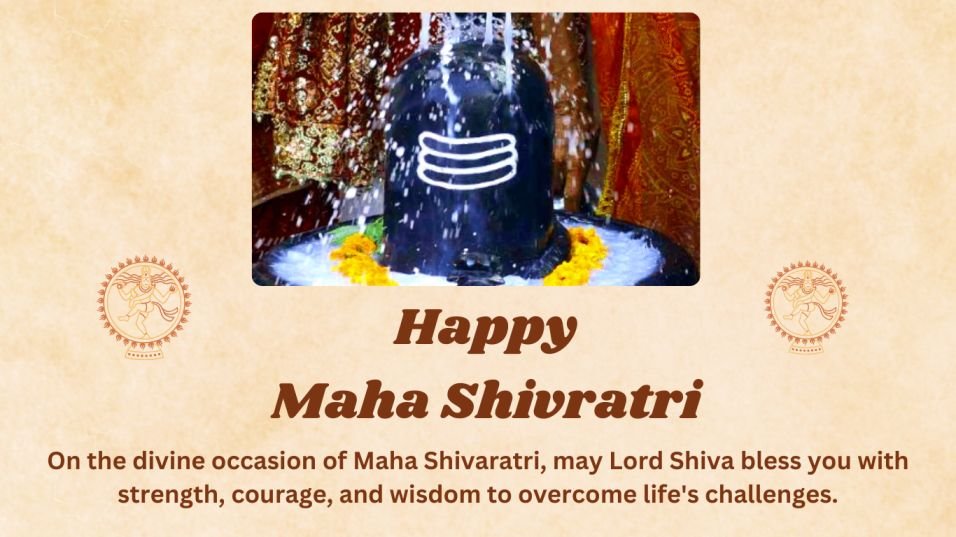Maha Shivratri 2024: Maha Shivratri is a Hindu Festival that is celebrated annually in each year to honour Lord Shiva and Goddess Parvati. Lord Shiva also known as the Destroyer and Transformer. Mahashivratri celebrated every year on Chaturdashi Tithi of Krishna Paksha in Phalguna Month according to Hindu calendar. In this Devotees around the world specially in India visit to Lord Shiva temples. On this day, people bring water and offer that pure water to Lord Shiva.
Maha Shivratri 2024: Date
Every year Maha Shivratri celebrated on Chaturdashi Tithi of Krishna Paksha in the month of Phalguna according to Hindu Calendar. This Phalguna month falls in the month of February and March. This year Mahashivratri falls on 8 March 2024.
Maha Shivratri 2024: Puja Time (Shubh Muhurat of Mahashivratri Puja)
Maha Shivratri puja falls on 8 March 2024. The Shiv Chaturdashi Tithi of Krishna Paksha starts from 8 March 09: 57pm and ends the tithi on 9 March 2024 at the time of 6:00 pm.
| Tithi | Date and Time |
| Chaturdashi Tithi Begins | 8 March 2024, 09:57 pm |
| Chaturdashi Tithi Ends | 9 March 2024, 06:17 pm |
| Ratri first Prahar Puja | 8 March 2024, 05:54 pm to 08:56 pm |
| Ratri Second Prahar Puja | 8 March 2024, 08:56 pm to 11:57 pm |
| Ratri Third Prahar Puja | 8 March 2024, 11:57 pm to 9 March 2024, 02:58 am |
| Ratri fourth Prahar Puja | 9 March 2024, 02:58 am to 06:00 am |
| Nishita Kaal | 8 March 2024, 11:33 pm to 9 March 2024, 12:21 am |
| Shivratri Parana | 9 March 2024, 06:00 am to 02:56 pm |
Maha Shivratri 2024 Rituals
Here are some of the key rituals associate with Maha Shivaratri:
- Fasting (Vrat): Many devotees observe a strict fast on Maha Shivaratri. They abstain from eating food and sometimes drink only water or consume fruits and milk. The fast is broken the next day. The fasting is believed to purify the body and soul, showing devotion and control over physical needs.
- Night Vigil (Jagaran): Devotees stay awake throughout the night of Maha Shivaratri, engaging in various forms of worship. This vigil symbolizes watchfulness and devotion, as it is believed that staying awake in worship brings spiritual growth and closeness to Shiva.
- Ritual Worship (Puja): Special pujas are performed during the night. These involve bathing the Shiva Lingam (a symbolic representation of Lord Shiva) with milk, yogurt, honey, ghee, sugar, and water, known as the Panchamrit, along with offering bael (Bilva) leaves.
- Offerings: Devotees make various offerings to Lord Shiva, including the sacred Bilva leaves, which are dear to him. Flowers, fruits, and incense are also offered. Making these offerings is a gesture of purification and devotion, aiming to please Shiva and earn his blessings.
- Chanting and Prayers: The chanting of the mantra “Om Namah Shivaya” and the recitation of hymns and prayers dedicated to Lord Shiva are common practices. Devotees immerse themselves in the repetition of Shiva’s name and his various attributes, seeking his guidance and protection.

Puja Vidhi or Puja Rituals during Mahashivratri puja
The puja (ritual worship) performed during Maha Shivaratri is rich with symbolism and devotion, aimed at honoring Lord Shiva. Here is a detailed look at the common rituals involved in the Shivaratri puja:
Sankalpa (Vow):
The puja begins with a sankalpa, which is a solemn vow to observe the day’s fasting and rituals with sincerity and devotion. This vow is a commitment to Lord Shiva to perform the worship with a pure heart and mind.
Shiva Lingam Abhishekam (Ritual Bath):
The central ritual of Maha Shivaratri puja involves the abhishekam, or the ritual bathing of the Shiva Lingam, which is a symbol of Lord Shiva. The abhishekam is performed with various substances, each with its own symbolic meaning:
- Water or Ganga Jal (holy water from the Ganges) used for purification.
- Milk symbolizes purity and piousness.
- Yogurt (curd) offered for prosperity and progeny.
- Ghee (clarified butter) is for victory.
- Honey symbolizes sweet speech and marital bliss.
- Sugar represents happiness.
- Finally, the Lingam bathed with water again, often perfumed with sandalwood paste or rose water.
After each offering, the Lingam is gently wiped with a clean cloth.
Offering of Bilva Leaves:
Bilva (Bael) leaves are dear to Lord Shiva, and offering them is considered very auspicious. These leaves are trifoliate, symbolizing the three eyes of Shiva or the three aspects of Shiva as creator, preserver, and destroyer. The leaves placed on top of the Shiva Lingam.
Offering of Flowers and Fruits:
Flowers, especially those white in color like jasmine, symbolize purity and offered to Lord Shiva. Fruits also offered as a symbol of longevity and satisfaction of desires. Dhatura Flower also offer to Lord Shiva. In this day the fruits Bael is specially offer to Lord Shiva.
Dhoop and Deep (Incense and Lamp):
Lighting of incense sticks (dhoop) and an oil lamp (deep) is an essential part of the puja. The incense symbolizes the purification of the mind, and the lamp symbolizes the light of knowledge and the removal of darkness.
Sandalwood Paste:
Sandalwood paste applied to the Lingam after the ritual bath. Sandalwood’s cooling properties are believed to please Shiva, who adorned with the crescent moon on his head.
Naivedya (Food Offering):
After the ritual worship, food offerings (naivedya) are made to the deity, which can include fruits, sweets, and specially prepared dishes. This followed by the distribution of prasad, the consecrated food, to the participants as a blessing.
Arti and Bhajans:
The puja concludes with the performance of the aarti, which involves waving a lamp in front of the deity accompanied by singing of bhajans (devotional songs) and clapping. The aarti represents the removal of darkness by true spiritual knowledge.
Mantra Chanting:
Throughout the puja, devotees chant mantras dedicated to Lord Shiva, especially the “Om Namah Shivaya” mantra, which considered a powerful invocation of Shiva’s presence.
Why did Maha Shivratri Celebrated?
According to Hindu mythology, it believed that on this day and in Chaturdashi tithi Lord Shiva married Goddess Parvati. This special night is celebrated because of their heavenly marriage. Lord Shiva represents Purusha, meaning awareness or consciousness, and Goddess Parvati represents Prakriti, meaning nature. When these two come together, it’s like joining awareness and nature, which helps in creating life. This is why this night is known as ‘The Night of Lord Shiva’ and celebrated with joy.
Fast rules of Maha Shivratri
Here are the general guidelines for fasting on Maha Shivaratri:
Strict Fast
- Complete Abstinence: Some devotees choose not to consume any food or water from sunrise on Shivaratri to sunrise the next day. This considered the most stringent form of fasting.
Partial Fast
- Fruit and Water: Many people observe a partial fast, where they consume fruits and drink water or milk. This type of fast manageable for most people and is believe to purify the body while keeping the energy levels up.
Phalahar (Fruit Diet) Fast
- Sattvic Food: Devotees who perform a phalahar fast consume a single meal of non-grain food items such as potatoes, sago, and other root vegetables, fruits, milk, and nuts. This diet considered pure and meant to ensure that the mind stays calm and focused on spiritual practices.
Specific Do’s and Don’ts on Mahashivratri
- Avoiding Cereals and Grains: It is common to avoid eating cereals, grains, pulses, and lentils during the fast.
- No Onion and Garlic: These food avoided as they considered tamasic (promoting inertia) and not suitable for a purification process.
- No Non-Vegetarian Food: Non-vegetarian food strictly avoided by those observing the fast, as it considered tamasic and also violates the principle of ahimsa (non-violence).
- Stay Hydrated: Drinking plenty of water recommended to stay hydrated, especially for those not observing a nirjala (without water) fast.
When to Break the Fast of Mahashivratri?
- Timing: The fast typically broken the next morning after sunrise, following the night of worship and the completion of the Shivaratri puja.
- Prasad: Devotees break the fast by consuming the prasad offered to Lord Shiva during the puja, which usually includes fruits and sweets.
What to wear in Mahashivratri 2024?
People always wear Traditional cloth during Puja celebration. Bengalis boy wear Kurta and the girls or women wears red border Saree. So, it is with you what to wear but it will be good if you traditional wear as it is the time to prayer.

